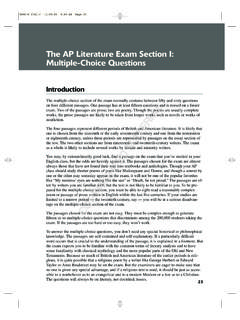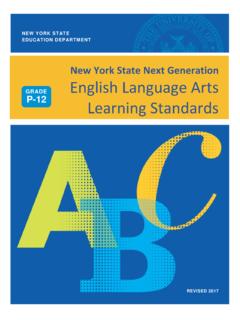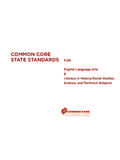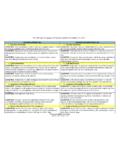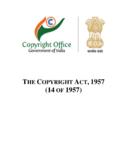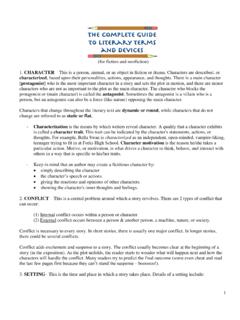Transcription of SECTION 1: LITERARY TERMS - Campbell's 3201 Academic …
1 NLESD, Labrador Region English 3201 Glossary of TERMS Complete List SECTION 1: LITERARY TERMS Allegory: a form of extended metaphor, in which objects, persons, and actions in a narrative, are equated with the meanings that lie outside the narrative itself. The underlying meaning has moral, social, religious, or political significance, and characters are often personifications of abstract ideas as charity, greed, or envy. It is a story with two meanings, a literal meaning and a symbolic meaning. (For example, in Tennyson s The Lady of Shallot , the lady represents the artist who is isolated from the real world.) Alliteration: the repetition of consonant sounds at the beginning of words in close proximity. (Example: He was a bouncing baby boy.)
2 Allusion: a reference, within a LITERARY work, to another work of fiction, a film, a piece of art, or even a real event or person. An allusion draws on outside sources to provide greater context or meaning to the selection. Analogy: a comparison of an unfamiliar object or idea to a familiar one in an attempt to explain or illuminate the unfamiliar. Anecdote: a brief story or account of a single incident without the elaboration (character development, figurative language, symbolism, etc.) Of a short story. Antagonist: the character, force, or collection of forces in fiction or drama that opposes the protagonist and gives rise to the conflict of the story; an opponent of the protagonist. Apostrophe: a figure of speech in which someone absent or dead or something nonhuman is addressed as if it were alive and present and could reply.
3 For example, in Romeo and Juliet, Romeo says, I defy you stars! Assonance: the repetition of similar vowel sounds in different words in close proximity. Example: The deep green Atmosphere: the feeling surrounding a LITERARY work. For instance, the atmosphere in the witches scene in the play Macbeth is quite dark and ominous. Cacophony: refers to harsh, unpleasant sounds that are used in poetry, often to create an effect. Example: The canon cracked. Character: an imaginary person that inhabits a LITERARY work. LITERARY characters may be major or minor, static (unchanging) or dynamic (capable of change). Characterization: is the means by which writers present and reveal character. Direct characterization occurs when an author states explicit information that reveals a character.
4 Example: Jack was a shy boy with an easy smile and a charming way. Indirect characterization: The author reveals a character by what he/she says, what he/she does, what other characters say about him/her, and sometimes, by a name or a nickname. (Example: The name Piggy in The Lord of the Flies may help in character revelation.) Climax: is the highest point of tension in a work; the turning point before the plot is resolved. Complication: A series of difficulties forming the central action in a narrative. Conflict: the struggle between two opposing forces within a work. NLESD, Labrador Region English 3201 Glossary of TERMS Complete List Page 2 Internal conflict involves a struggle within (a person versus self).
5 Examples of this include guilt, fear, indecision, et cetera. External conflict involves the struggle of a character with an outside force (person versus nature, person versus person, person versus society, et cetera). Connotation: the connotation of a word involves the attitudes and feelings associated with a word. These associations can be negative or positive, and have an important influence on style and meaning. For most people, the word mother calls up very strong positive feelings and associations--loving, self-sacrificing, always there for you, understanding; the denotative meaning, on the other hand, is simply "a female animal who has borne one or more children." Of course connotative meanings do not necessarily reflect reality; for instance, if someone said, "His mother is not very motherly," you would immediately understand the difference between motherly (connotation) and mother (denotation).
6 Consonance: the repetition of similar consonant sounds, especially at the ends of words, as in lost / past, confess /dismiss, middle / muddle. Denotation: the dictionary meaning of a word. Writers typically play off a word's denotative meaning against its connotations, or suggested and implied associational implications. Diction: the selection of words in a LITERARY work. A work's diction forms one of its centrally important LITERARY elements, as writers use words to convey action, reveal character, imply attitudes, identify themes, and suggest values. Dominant impression or image: in descriptive writing one dominant person or overall feeling should prevail. ( , that of terror, beauty, etc.). Epiphany: it is a moment of enlightenment that may be caused by an everyday event or occurrence.
7 Eulogy: a speech or writing in praise of a person who has died. Euphony: is soothing, pleasant, harmonious sounds, especially words spoken in combination. Extended metaphor: a metaphor that is used throughout a work or is continued for a few lines of a selection. Fable: a tale, especially one with animals as characters conveying a moral. Figurative language: a form of language use in which writers and speakers convey something other than the literal meaning of their words. Examples include hyperbole or exaggeration, understatement, simile and metaphor, which employ comparison, and synecdoche and metonymy, in which a part of a thing stands for the whole. Flash fiction: a very short piece written in prose, often focusing on a particular incident, thought, or epiphany.
8 It does not involve elaborations of characterization and plot in a short story and has some characteristics of poetry in its focus on a particular meditation or incident. Flashback: an interruption of a work's chronology to describe or present an incident that occurred prior to the main time frame of a work's action. Foil: a character whose qualities or actions serve to emphasize those of another character (usually the protagonist) by providing a strong contrast with that character. Foreshadowing - when hints of what is to come in the action of a play or a story are given, it is known as foreshadowing. NLESD, Labrador Region English 3201 Glossary of TERMS Complete List Page 3 Genre: a French word meaning kind or type.
9 The major genres in literature are poetry, fiction, drama, and essays. Hyperbole: intended exaggeration used to create a desired effect such as humour or sarcasm. Imagery: language which describes something in detail, using words to substitute for and create sensory stimulation. One or more of the senses is used to create imagery. Irony: (dramatic, situational, and verbal): There are three distinct types. Dramatic irony: occurs when the audience and/or one or more characters in a work are aware of information that another character or characters are not. For instance, in Romeo and Juliet, Friar Laurence and the audience are aware that Juliet is merely asleep, but Romeo and the others are not. Thus, Romeo kills himself because he thinks his love is dead.
10 Situational irony: evident where an unexpected event occurs, in the sense that it is somehow in absurd or mocking opposition to what would be expected or appropriate. Mere coincidence is generally not ironic; neither is mere surprise, nor are any random or arbitrary occurrences. For instance, in Oedipus the King, Oedipus says that he fears that the murderer of Laius will come after him too. The irony is that Oedipus himself killed Laius. Verbal irony: speech in which what is said is the opposite to what is meant. It is a form of sarcasm. Juxtaposition: the arrangement of two or more ideas, characters, actions, settings, phrases, or words side-by-side or in similar narrative moments for the purpose of comparison, contrast, or character development.

